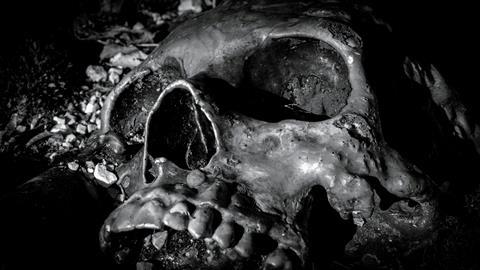Human Taphonomy Facilities, also known as body farms, are outdoor research facilities used to study human decomposition under different environmental conditions and stressors. The first body farm was suggested and created by William M. Bass, an American forensic anthropologist. While working at the University of Tennessee in 1977, he was asked to examine the body of a murder victim and found himself unable to correctly estimate the time of death; this incident suggested that more research was needed on the mechanisms of human decomposition, particularly when exposed to different environments. Following this, he founded the University of Tennessee’s Anthropological Research Facility, also known as “The Body Farm”. Since then, six more facilities have been formed in the United States of America, as well as in Canada and Australia.
How do body farms work?
At the University of Tennessee, the process begins with acquiring corpses to be used in the facility through donation from the public or the Tennessee medical examiners’ office. Then, upon arrival, the corpse is given an identification number for confidentiality and examined to record its original state. Then the body can be placed in a variety of different locations and under different conditions, for example, in direct sunlight or shade. Following this, the bodies are allowed to reach various stages of decay, and all findings are recorded.
The first stage of decay is called self-digestion, which refers to the decomposition of internal organs by bacteria and enzymes within the gut. Following this, the bacteria reproduce and emit gases, causing the body to bloat and possibly double in size. Active decay, stage three, involves the release of liquified organs and muscles into the surrounding environment. By the time stage four, advanced decay, is reached, some bones, hair, and some skin remain, and this is followed by the final stage, dry remains, which leaves only bones behind.
The time it takes for each body to decay will differ massively based on the environment the body was staged in. For example, in the sunlight, decomposition happens at a much faster rate than in the snow. This is one of the main advantages of having body farms in several different locations: to more closely estimate the local conditions experienced by bodies during a murder investigation, for example. Decay time can also be affected on an individual level. The size and health of each body pre-donation will impact how decay happens, as well as whether the donor used to take any medication.
How do body farms help?
Several different measurements and investigations are conducted by researchers at body farms. Forensic entomologists can use body farms to investigate how insects behave and interact with the body during putrefaction, and forensic taphonomists can use the facilities to investigate how different environmental factors change the speed and degree of decay. The University also processes and records data on all the bones produces following decay and enters them into the University of Tennessee’s forensic anthropology data bank based on several characteristics of the donor, including age, sex, and race, which aids forensic anthropologists and law enforcement in identifying other previously unidentified bodies and human remains, as well as identifying the cause and time of death.
Body farms can also be used to train law enforcement. Investigators are able to learn how best to move or unearth bodies while looking for evidence without disturbing vital information that can be identified from the surrounding soil. Bodies can also be set on fire to help train fire investigators or even used to train cadaver hunting dogs.
Critiques of body farms
Body farms are useful sources of forensic information. However, there are some drawbacks to the data collected at body farms. Currently, donated bodies are overwhelmingly those of white men, meaning the breadth of data collected is very slim. Further, many of the donated bodies are received from individuals who were ill for a long time before death, and this can affect the process of decay. For example, someone who died of natural causes may have a different microbial community than that of a victim of a drug overdose. Additionally, some local communities surrounding body farms complain of increased scavenging by animals and insects around the sites. These could affect local ecosystems and cause damage to the surrounding environment. There is a subterranean body farm in the Netherlands that may pose a solution to these issues, although this would impact the research that is able to be carried out.
In short, human taphonomy facilities provide a unique source of forensic information for a variety of purposes. They allow an insight into the human decomposition process and, whilst they are far from perfect, they can and have been used for several years to aid researchers and law enforcement alike.








No comments yet